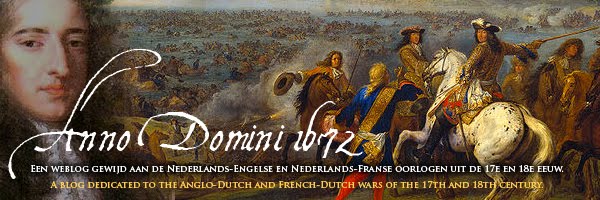En hier het tweede deel van Bosscha.
~~
And this is part two....
The OOB shows that there was a 'rechtervleugel' (right wing) and a 'Linkervleugel' (left wing), formed in two lines of cavalry and on the left wing two lines of infantry, the right wing having one 'line'.
These lines were divided in brigades, with it's own commander and subdivided in regiments. Most of the names you see, are those of regimental commanders. 'Gekwetst' means wounded and 'gesneuveld' means 'killed in action'.
Official strength of a company was 81, but a company had to have at least 40 men without suffering consequenses for the captain or colonel. (Van Nimwegen). Sapherson lists 89 men per company except for Guards (100) and marines (150). Before the war, a regiment consisted of 12 companies, and Guards of 10 companies.
Cavalry regiments consisted of 6 companies of 80 men (Sapherson), but during the 1672-1679 war numbers declined.
Especially the Frisian and Groningen regiments had a bad reputation for being undermanned, mainly because of the fact that they had a Stadhouder of their own and did not fall directly under William III, who - of course - thought entirely different about this matter. It should be noted though that the Holland regiment Jorman (present at the siege of Groningen) was disbanded in 1674 because of financial malpractises, usually meaning getting too much money for too few troops.
I counted 34 regiments of foot plus 21 cavalry regiments., so theoretically that should be 46.392 men! In fact the army was smaller, a contemporary source 'Tweejarighe Geschiedenis', quoted in Bosscha, list the States's army to 34.000 men.






Geen opmerkingen:
Een reactie posten
Opmerking: Alleen leden van deze blog kunnen een reactie posten.